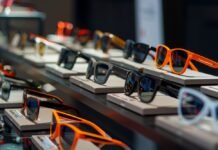From haute couture runway shows and magazine covers to social media endorsements and collaborations, modelling has seen some major changes over the years. Social media has shattered beauty standards and opened up new career paths for aspiring models.
Models are a key part of the fashion industry. They showcase clothes to the public and help to influence buyers’ buying decisions.
The Origins of Modeling
Modeling is a scientific technique that creates representations of real-world objects, persons or systems. Such models may be used for analysis, experimentation, simulation and knowledge acquisition. Modeling is an important tool in scientific research and is used in the fields of science education, philosophy of science, and systems theory.
Modelling as a profession began in the 1800s and became popular with fashion designers like Worth who used live models to display their creations. The models were often young and beautiful, gaining celebrity status in their own right and becoming highly sought after for film, TV and print work.
In the 1960s, modelling became an international career as London emerged as a fashion hub with iconic faces like Twiggy and Jean Shrimpton taking center stage. During this time, agencies were also popping up around the world and models were traveling to different locations for their shoots. With more competition came better wages and working conditions for the models. In addition, there was more diversity in the modeling industry with plus sized models and commercial models entering the mix.
The First Models
Models for painters and sculptors have been around since ancient times. But fashion modeling only became popular when clothing was sold. The first models were mannequins, which were used to show off new clothes or serve as the basis for paintings and ads. Charles Frederick Worth, considered the Father of Haute Couture, started using live models in his fashion shows, and his wife was the first woman to be a “fashion model.”
Early in the modeling world, photographers controlled who got booked, and models gained fame through their association with well-known photographers, like Vogue photographer Horst P. Horst and the Swedish beauty Lisa Fonssagrives. The 1950s saw the rise of big-name models, such as Suzy Parker and Lauren Hutton, who were known by the public, but largely within the fashion world.
In the 2000s, social media helped make models more accessible to the general population, and gave them a greater range of modeling opportunities. This also introduced more diversity to the industry, with black models becoming more widely seen, including Beverly Johnson and Grace Jones. The modeling industry began to evolve into more of a service industry, with agencies bidding against each other to attract the best models and establishing exclusive contracts.
The 1950s
For many of us, the 1950s evoke a sense of glamour and femininity. Women’s clothing was beautifully tailored and often exaggerated with voluminous skirts and tiny waists, creating the iconic silhouettes that still flatter today.
After World War II, rationing had eased and people were beginning to focus on the finer things in life. This was evident in the fashion trends of the time, as men and boys began wearing suits with a variety of collar styles and jacket shapes.
In the midst of all these changes, a new breed of models began to emerge. The likes of Dorian Leigh, Suzy Parker and Jean Patchett paved the way for future generations of models by showcasing their unique style and grace in front of the camera. They showed that modelling could be a prestigious career option and something to be proud of, even if it meant living in isolation in the shadow of a studio apartment with only a few friends. As a result, models became the icons society looked to for the latest styles and fashion trends.
The 1960s
The 1960s saw the rise of many iconic models. No one exemplified the decade’s style more than Twiggy, with her boyish pixie cut and trend-setting mod look. Her sexy, androgynous appearance set a new standard for beauty that is still followed today.
Jean Shrimpton, the first black model to grace a Vogue cover, was another top supermodel of the 1960s. Her statuesque beauty and ethereal presence made her an instant fashion icon.
Other models of the era were more interested in political and social change. The counterculture embraced a back-to-the-land ethic and environmental issues. Influential books like Rachel Carson’s Silent Spring and Paul Ehrlich’s The Population Bomb warned about overpopulation, pollution, and automobile-dependent lifestyles.
For top models, the ’60s brought better pay and working conditions. But they didn’t have the glam squads and entourages of today. A model of the era could be expected to carry her own makeup and hair kit around on location assignments. This made it difficult to move from city to country for shows. Models often had to haul their equipment in vans.
The 1970s
As the 1970s began, modeling was a profession with well-paid stars. Models like Barbara Goalen, Bettina Graziani and Lisa Fonssagrives became household names due to their popularity in fashion magazines and advertising campaigns.
Model agencies had begun to establish themselves, and the industry became more professional. Models were expected to have their hair and makeup done before arriving for a shoot, and they were paid accordingly.
The decade also saw the birth of glamour modelling, with models such as Jean Shrimpton and Edie Sedgwick being heavily photographed for Penthouse and Playboy. In Britain, models such as Tania Mallet, Celia Hammond and Twiggy dominated the fashion scene.
For the first time, models started to become brand ambassadors with exclusive contracts with beauty brands such as Revlon and MAC. American models such as Marisa Berenson and Margaux Hemingway climbed to the top of the ranks. They were regarded as icons, not just beautiful faces. This changed the fashion world, as customers wanted to emulate these glamorous models by dressing themselves in their style and purchasing the clothing that they wore.
The 1980s
The high-tech earth modelling we use today owes its beginnings to a thin filament of gold and the spirit of exploration. The explorers used the filament to mark the direction of the magnetic North in their sketches of the land. This helped them map and chart their discoveries, which would eventually lead to the construction of the first magnetometers.
The 1980s brought the supermodel phenomenon to prominence, with models like Cindy Crawford, Christy Turlington, Linda Evangelista, Naomi Campbell, and Tatjana Patitz all making their mark on the fashion industry. The famous Trinity squad, chosen by legendary photographer Peter Lindbergh for the infamous Vogue cover, became iconic.
The decade also saw a rise in diversity among fashion models. Karen Alexander broke barriers as one of the first Black models to grace the cover of Sports Illustrated Swimwear and Chanel beauty campaigns, making her a household name. Models like Joan Smalls, Winne Harlow, Slick Woods, and Jasmine Sanders continue to make strides in breaking racial barriers in the modeling world today. They are paving the way for the next generation of supermodels.
The 1990s
By the 1990s, models gained even more recognition, appearing in music videos and on magazine covers. A handful of models rose to prominence, including Kate Moss, Claudia Schiffer and Cindy Crawford. These were the first capital S supermodels, and their thin frames set new standards for body shape and size in modeling.
Models also gained celebrity status outside of fashion, gaining visibility on talk shows and becoming party guests at the most exclusive events. As a result, models became celebrities in their own right and had to take care of their image and health.
One of the biggest changes was the emergence of Black models, with Alek Wek and Joan Smalls making a big splash on the fashion scene. Wek went on to be the face of Thierry Mugler and Chanel, while Smalls is now a regular judge on America’s Got Talent and the host of Design Made Simple. Early 90s fashion trends like slip dresses, scrunchies and flannel shirts are currently in style, with many brands taking a cue from the decade.
Get premium da pa spam checker with fast approval. Secure niche placements to improve your SEO and online visibility.
The 2000s
Throughout the 2000s, models became more than just walking fashion displays. They were also activists, public speakers, social media personalities and business-owners. This increased the status of modelling, while also exposing issues like abuse and poor working conditions for some models. This caused modelling associations to pop up and help fight for better treatment for models.
The era of the Instagram model was also introduced in the 2000s, which further pushed models to be more than just walking fashion displays. This prompted brands to start pushing for diversity in models, and as a result we are seeing more models of different shapes, sizes and colors.
It was also in this decade that modellers started to use modelling as a tool for research. These modellers come from different fields of expertise such as mathematics, computer science, epidemiology, project management and clinical medicine. As such, they are able to come together with diverse perspectives and ideas to create innovative models. The emergence of prediction as a service also encouraged modellers to make models accessible to other teams within organizations. This often involved modifying the model to suit their requirements. However, it is important to note that adding complexity can sometimes be counter-productive as too many details can prevent a model from being understood and generalized (Fisher & Koven, 2020).






